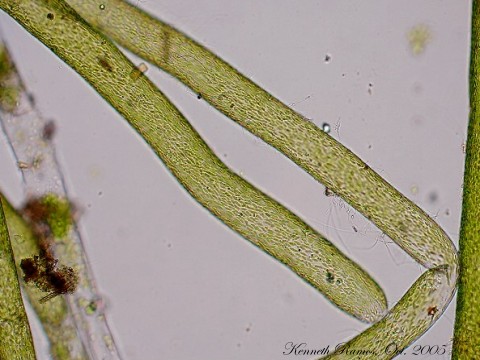Name: Vaucheria
Family: Vaucheriaceae
Collection Date: November 17th, 2011
Location: East Hall, Hiram College, Hiram, Ohio
Collector: Katie Rumora
Key Used:
Bellinger, E. G., & Sigee, D. C. (2010). Freshwater Algae: Identification and Use as Bioindicators . Oxford : Wiley-Blackwell.
1b. Plants microscopic or if visible to the naked eye it is normally because they are present as a mass – but still requiring microscopic observation to determine the more detailed morphology … 3
3a. Cells grouped together to form a filament, strand or ribbon. Sometimes filaments can grow in such a profusion to be visible en masse, or are visible as multiseriate rows encrusting stones … 4
4a. Cell pigments localized in chloroplasts. Colour when fresh may be grass green, pale green, golden to brown, olive green or blueish or reddish … 5
5a. Filaments branched, sometimes rarely. False or true branching … 6
6b. Branches of filaments do not rejoin to form a net … 7
7b. Cells not in flask-shaped loricas … 8
8a. Filaments without cross walls dividing them into separate cells, cross walls only appearing when reproductive structures produced. Irregularly branched … Vaucheria
Description:
“Filaments are cylindrical, multinucleate and lack cross walls. There are numerous discshaped to oval chloroplast with or without pyrenoids. The usual storage products are oil and fat, very rarely starch. Branching does occur but its irregular. Filament 20-140µm wide. The various species are identified mainly by their reproductive structures. Widespread and may form green mats of tangles filaments in shallow freshwaters, on stones and damp soil. It may also occur in salt marshes and brackish water muds” (Bellinger & Sigee, 2010) .
Figure 1: Prepared slide of Vaucheria

Figure 2: Another view of Vaucheria
Links:

No comments:
Post a Comment